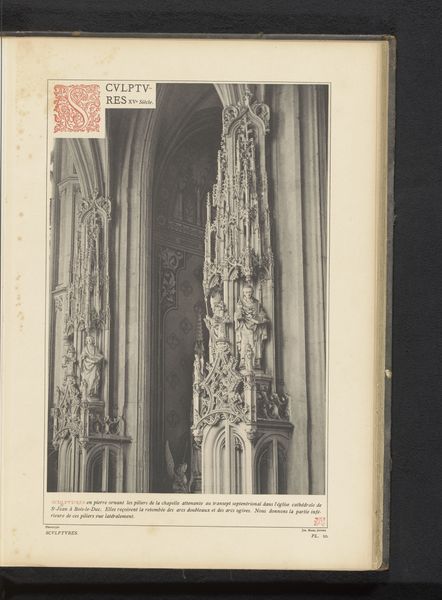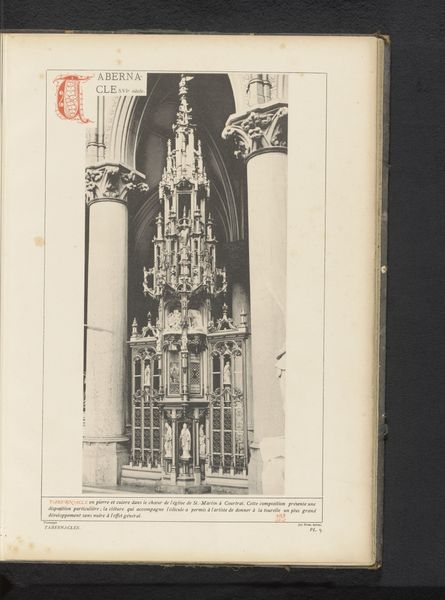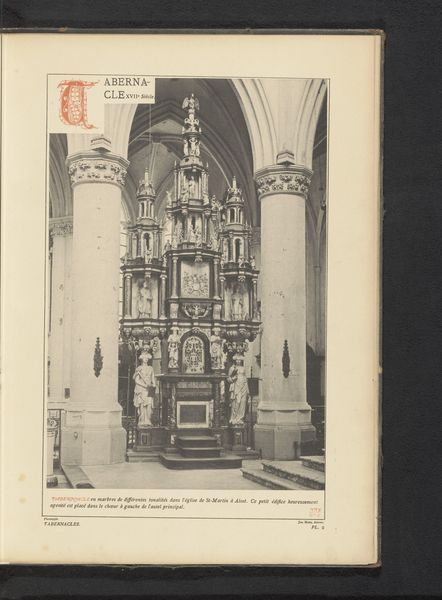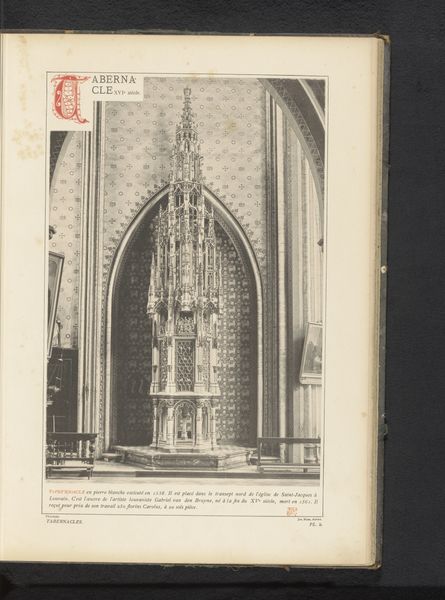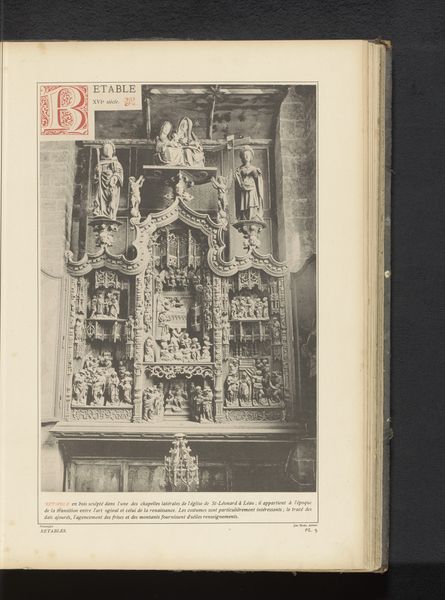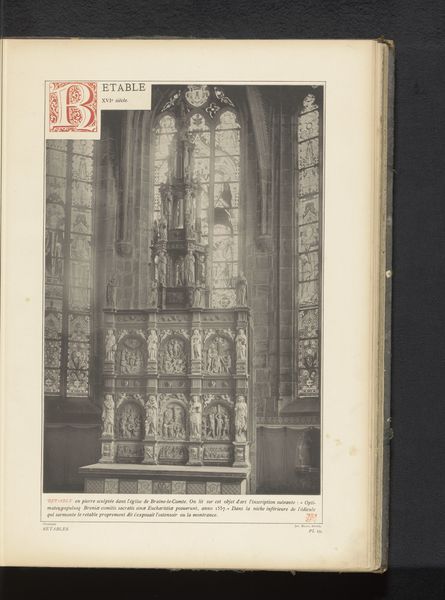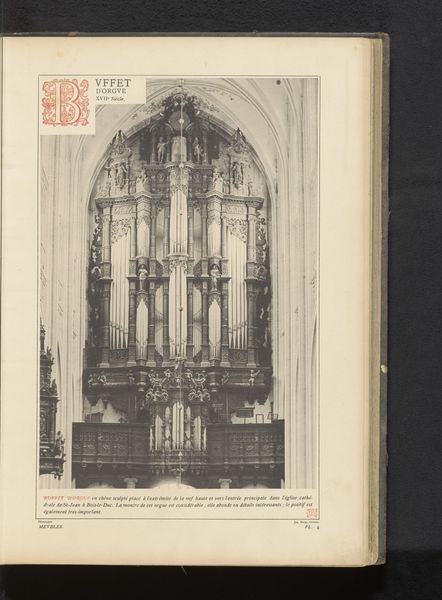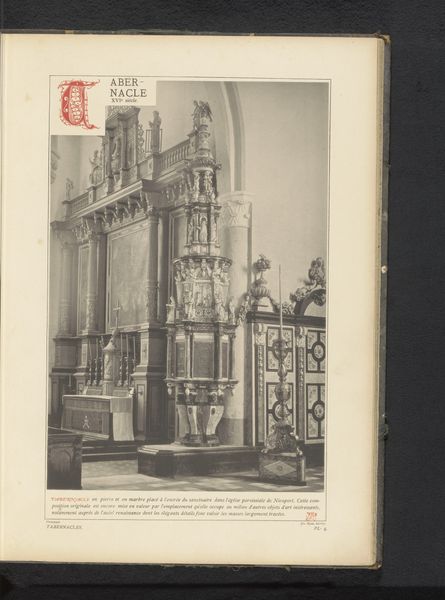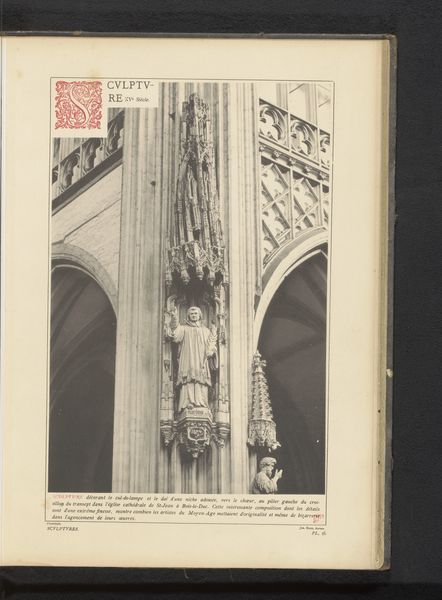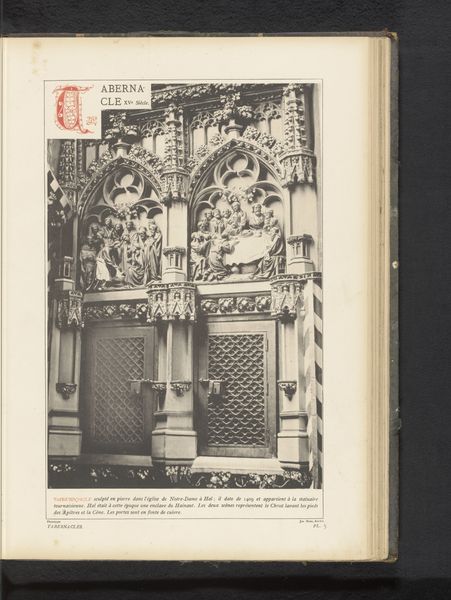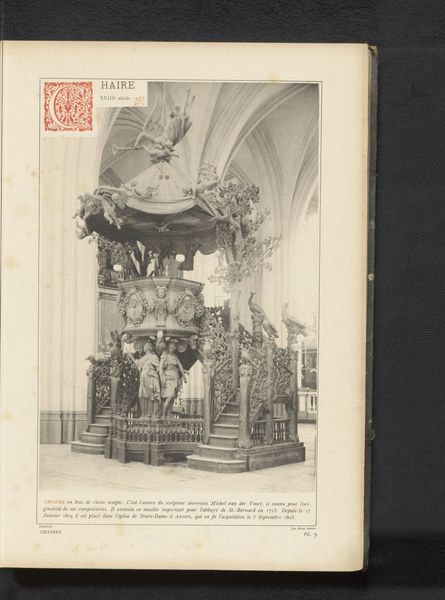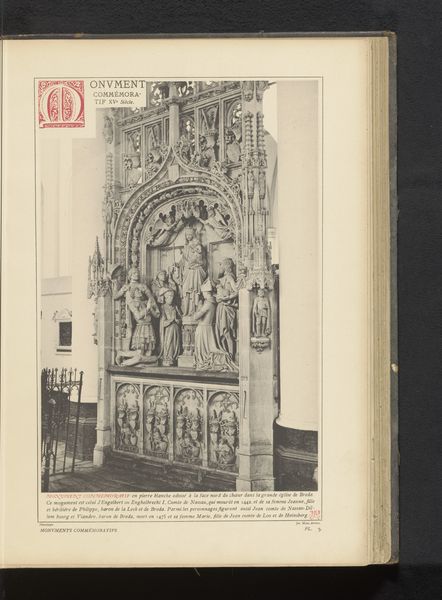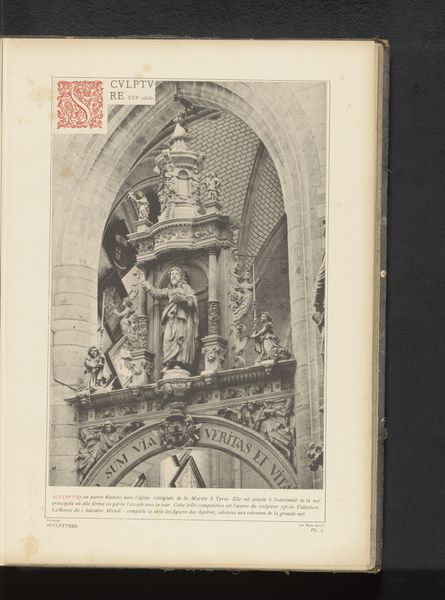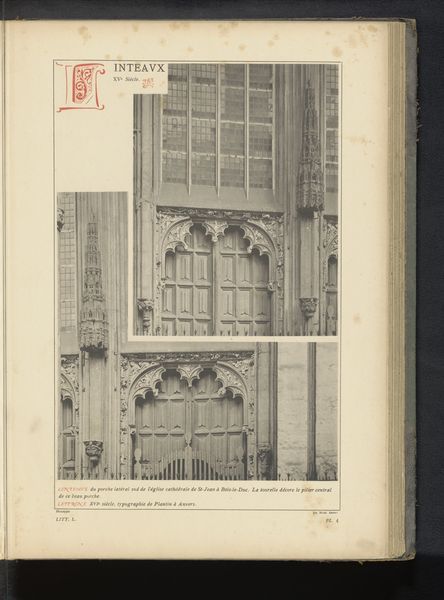
Altaarstuk van steen in het zuidelijk transept van de Sint-Waltrudiskerk in Mons, België before 1887
0:00
0:00
Dimensions: height 341 mm, width 231 mm
Copyright: Rijks Museum: Open Domain
Curator: Looking at this monochrome photograph, taken before 1887, we see the 'Altar Piece of Stone in the Southern Transept of the Saint Waltrudis Church in Mons, Belgium'. It presents us with a complex, vertically-oriented architectural sculpture. Editor: It's a towering statement, isn’t it? Soaring and ornate, a really intense expression of Gothic ambition. I am struck by its inherent inaccessibility – positioned in a church that might restrict its viewer depending on religious beliefs or their access as a disabled person. Curator: Precisely, let’s observe the arrangement. We have three main vertical sections, each intricately carved. Note the geometry – the pointed arches, the repeated shapes that create rhythm, and the figures nestled within their alcoves. Editor: Right, and that stone speaks volumes. The material choice situates the Church’s authority during the Gothic era and reinforces narratives of power linked to religious institutions. It’s impossible to overlook its cultural significance or its position within sociopolitical events, the architecture functions like a historical text to interpret. Curator: An apt comparison! Now, considering it predates 1887, one can deduce from the photographic technique that it wasn't intended as a subjective work of art in its own right. Editor: While the focus might be on the subject captured, the gaze, even in pre-1887 photography, isn’t neutral. Choosing to document this altarpiece over other potentially important local histories reflects particular values – ones rooted in a white, European context of power. This visual object speaks volumes regarding the history of art and its relation to sociopolitical constructs that inform contemporary interpretations. Curator: I concur that the photographic medium informs meaning. Nevertheless, if we suspend disbelief and accept the print for its indexical nature, what of the formal features themselves? What about its structure inspires introspection in a modern viewer such as yourself? Editor: The height, even in this representation, overwhelms. I question, however, who this was 'meant' to inspire, which I read as an ideological, and not spiritual, question. Perhaps considering the church in the context of ongoing socio-economic changes could unveil new understandings of it and allow for discussions on inclusive spaces within it. Curator: Indeed. The power that resonates is as much cultural and historic, as inherent in its design. Editor: And through a modern analysis of photographs like this, we invite a conversation regarding history, the church’s role in cultural life, and accessibility as both physical reality and conceptual framing.
Comments
No comments
Be the first to comment and join the conversation on the ultimate creative platform.
